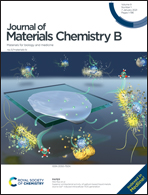Resorufin-based responsive probes for fluorescence and colorimetric analysis†
Abstract
The fluorescence imaging technique has attracted increasing attention in the detection of various biological molecules in situ and in real-time owing to its inherent advantages including high selectivity and sensitivity, outstanding spatiotemporal resolution and fast feedback. In the past few decades, a number of fluorescent probes have been developed for bioassays and imaging by exploiting different fluorophores. Among various fluorophores, resorufin exhibits a high fluorescence quantum yield, long excitation/emission wavelength and pronounced ability in both fluorescence and colorimetric analysis. This fluorophore has been widely utilized in the design of responsive probes specific for various bioactive species. In this review, we summarize the advances in the development of resorufin-based fluorescent probes for detecting various analytes, such as cations, anions, reactive (redox-active) sulfur species, small molecules and biological macromolecules. The chemical structures of probes, response mechanisms, detection limits and practical applications are investigated, which is followed by the discussion of recent challenges and future research perspectives. This review article is expected to promote the further development of resorufin-based responsive fluorescent probes and their biological applications.



 Please wait while we load your content...
Please wait while we load your content...